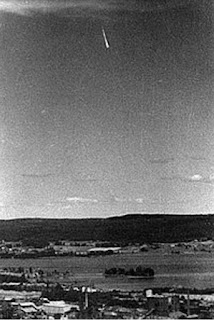Part 1: Goblin Arrows
- Its not a couple of days to Phandalin. The move rate for the oxen drawn cart is slow (16 miles per day). They reach where the trail turns off the road on the evening of day three (making camp). You should have rolled for six encounters- day, night, day, night, day, night. The goblin ambush is the 4th day encounter (7th encounter roll). Then there is a night encounter (8th) where you make camp turning from the trail south toward Phandalin and one more day encounter (9th) a few miles from Phandalin.
- Four goblins is a tough fight for three first level characters. Five PCs, though described as the upper limit are vital just to make the trip in good condition.
- Its unlikely they will follow the goblins trail to their hideout simply because- they are employed to deliver the cart to Phandalin. They must abandon the cart to do so.
- If the PCs die in the goblin ambush, you should add their belongings to the treasure stash and let some 'new adventurers' stumble across the adventure. Remember the PCs were Friends of a dwarf in the town of Phandalin. If they are killed, the new PCs would not be friends of the Dwarf, just random PCs stumbling across the scene of an ambush. They might decide to take the cart and the dead to Phandalin or pursue the goblins trail.
The Goblins lair at 'Cragmaw Caves' is a high risk dungeon with 14 goblins (18 if you include the four at the road ambush), 3 wolves and their Bugbear leader.
The game trail takes the PCs through a snare and a pit trap before arriving at location 1. Location 2 Has a couple of lookouts. All it takes is one of them to fire a signal arrow into the cave which carries to a location close to the lookout goblin on the bridge near location 5.
Whats the easy win solution? Wolvesbane. Since the beginning of D&D Wolvesbane has been available to any PC in the players handbook. Real wolvesbane is a poison. It is always fatal so no constitution checks/save vs poison for the victim. Only magic would cure this before death hits hours later. If you survive the goblins ambush on the road, the best response is to poison food with fresh wolvesbane leaf sap, rub it over a few hams or in a wineskin and leave it for the next goblins as though the previous goblins had managed to stash it before being killed. As DM you should wait for PCs to come up with the plan, and roll a 1d20 to determine population of the cave killed by wolvesbane.
1d20 killed by wolvesbane
01 only the hostage
02 goblin from area 1
03 +1 goblin from area 1
04 +wolf 1
05 +wolf 2
06 +wolf 3
07 +1 goblin area 7
08 +1 goblin area 7
09 +1 goblin area 7
10 +1 goblin area 6
11 +1 goblin area 6
12 +1 goblin area 6
13 +1 goblin area 6
14 +1 goblin area 6
15 +1 goblin area 6
16 + Yeemik the Goblin in area 6
17 +1 goblin in area 8
18 +1 Goblin in area 8
19 +Klarg the Bugbear in area 8
20 everyone in the cave including the hostage
Wolvesbane is also the solution for eliminating the Redbrand hold up in Part 2: Phandalin...and there is a Druid in town who can get you what you need.

































